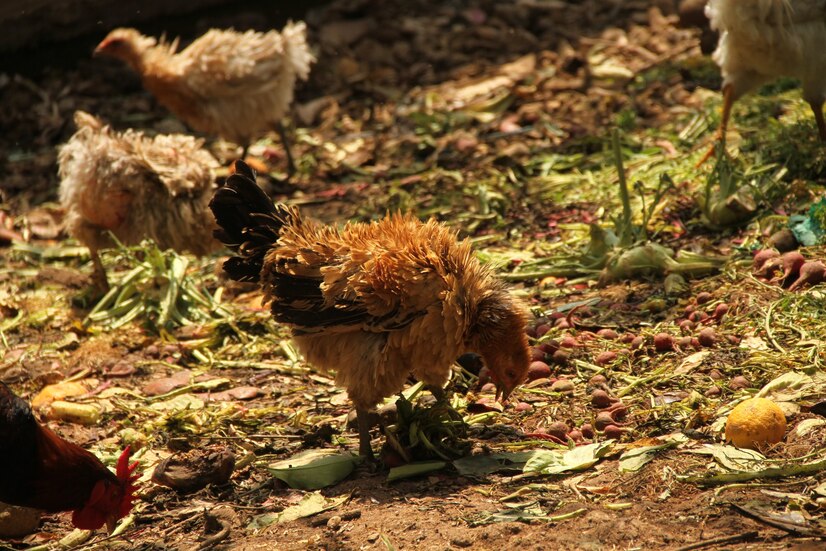Chicken of the Woods, scientifically known as Laetiporus, is a fascinating species of edible mushroom that has captured the attention of foragers, chefs, and mushroom enthusiasts around the world. With its vibrant colors, unique texture, and savory flavor, Chicken of the Woods stands out as a prized delicacy in culinary circles. In this article, we’ll delve into the various aspects of Chicken of the Woods, including its taxonomy, culinary uses, health benefits, foraging tips, and more.
Taxonomy and Classification
Chicken of the Woods belongs to the genus Laetiporus within the fungal family Polyporaceae. There are several species within this genus, including Laetiporus sulphureus and Laetiporus cincinnatus, each with its own distinct characteristics and distribution.
Habitat and Distribution
Chicken of the Woods is commonly found in wooded areas, often growing on the trunks or stumps of hardwood trees such as oak, cherry, and beech. It has a widespread distribution, occurring in North America, Europe, Asia, and other regions with suitable habitat.
Identification
Identifying Chicken of the Woods requires careful observation of its key features. It typically has a shelf-like appearance with overlapping layers of bright orange or yellowish-orange flesh. The underside of the mushroom is smooth and lacks gills, while the outer surface may be fuzzy or velvety.
Culinary Uses
One of the most appealing aspects of Chicken of the Woods is its versatility in the kitchen. It can be used as a meat substitute in vegetarian and vegan dishes, thanks to its meaty texture and savory flavor. Common culinary preparations include sautéing, grilling, and incorporating it into soups, stews, and pasta dishes.
Health Benefits
In addition to its culinary appeal, Chicken of the Woods offers various health benefits. It is rich in protein, vitamins, and minerals, making it a nutritious addition to one’s diet. Some studies suggest that it may have antimicrobial and anti-inflammatory properties, although more research is needed to fully understand its potential health benefits.
Foraging Tips
Foraging for Chicken of the Woods can be a rewarding experience, but it’s essential to exercise caution and proper identification techniques. Always consult a reliable field guide or experienced forager before consuming any wild mushroom, and be mindful of potential look-alike species and toxic mushrooms.
Conservation Status
Due to its popularity among foragers and its susceptibility to habitat loss, some species of Chicken of the Woods are facing conservation challenges. Efforts are underway to better understand its ecology and distribution and to promote sustainable foraging practices to ensure the long-term viability of this species.
Cultural Significance
Chicken of the Woods has a rich cultural history, with references to its culinary and medicinal uses dating back centuries. It has been used in traditional cuisines around the world and is often associated with themes of abundance, nourishment, and vitality in folklore and mythology.
Common Misconceptions
Despite its popularity, Chicken of the Woods is sometimes subject to misconceptions and myths. It’s important to distinguish fact from fiction when discussing this mushroom, especially regarding its identification, edibility, and potential health risks.
Interesting Facts
Did you know that Chicken of the Woods is sometimes referred to as the “sulphur shelf” due to its vibrant orange color and shelf-like growth habit? Or that it’s capable of causing wood decay in living trees, making it both a decomposer and a symbiotic partner to its host?
Precautions and Warnings
While Chicken of the Woods is generally considered safe to eat for most people, there are some precautions to keep in mind. Individuals with allergies to mushrooms should avoid consuming it, and proper cooking is essential to eliminate any potential risks of foodborne illness.
Environmental Impact
Chicken of the Woods plays a crucial role in forest ecosystems as a decomposer, breaking down dead wood and recycling nutrients back into the soil. Its presence is indicative of healthy forest ecosystems, making it an important species for conservation efforts.
Growing Chicken of the Woods

For those interested in cultivating their own Chicken of the Woods mushrooms, there are methods available for growing them at home. While it can be challenging to mimic the natural habitat conditions, with proper care and attention, it’s possible to cultivate this prized mushroom in a controlled environment.
Conclusion
Chicken of the Woods is more than just a culinary curiosity—it’s a fascinating organism with ecological, cultural, and medicinal significance. Whether you’re foraging for wild mushrooms, experimenting in the kitchen, or simply marveling at the wonders of the natural world, Chicken of the Woods is sure to captivate your imagination and tantalize your taste buds.
FAQs
Is Chicken of the Woods safe to eat?
Generally, yes. However, it’s crucial to properly identify the mushroom and cook it thoroughly to avoid any potential risks.
Can Chicken of the Woods be cultivated at home?
Yes, it’s possible to grow Chicken of the Woods mushrooms using specialized cultivation techniques and substrates.
What does Chicken of the Woods taste like?
Chicken of the Woods has a mild, savory flavor reminiscent of chicken, hence its name.
Are there any toxic look-alikes to Chicken of the Woods?
Yes, there are some species of mushrooms that resemble Chicken of the Woods but are toxic or inedible. It’s essential to consult a reliable field guide or expert for proper identification.
Where can I find Chicken of the Woods?
Chicken of the Woods can be found in wooded areas worldwide, particularly on the trunks or stumps of hardwood trees.
